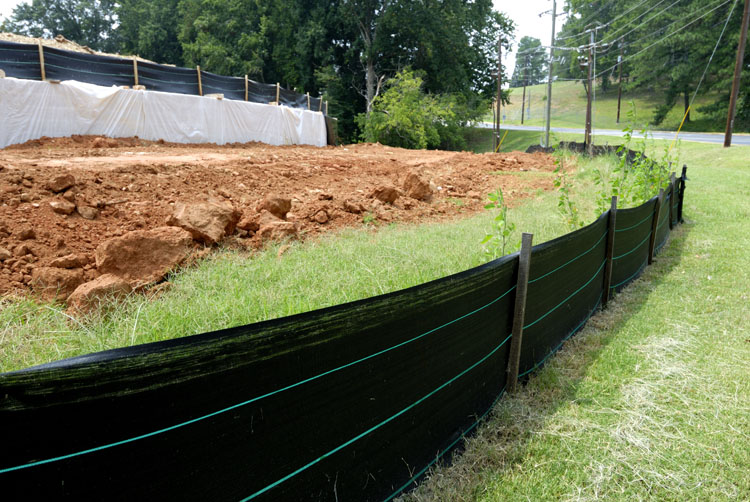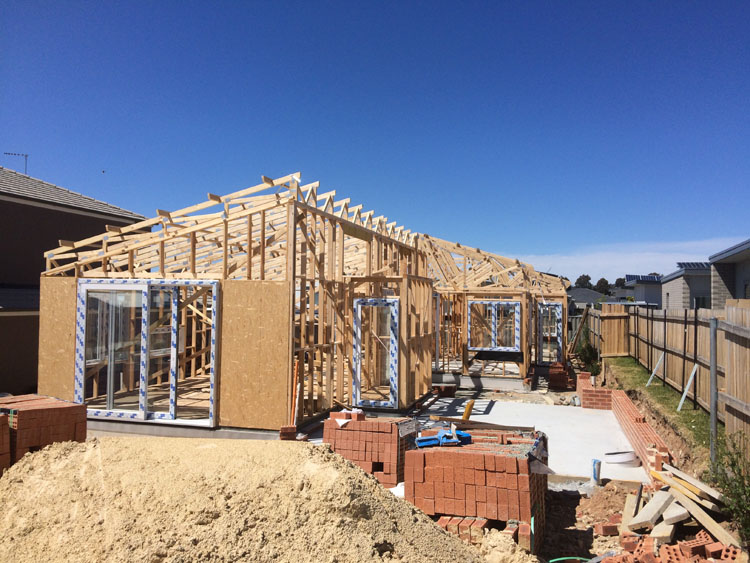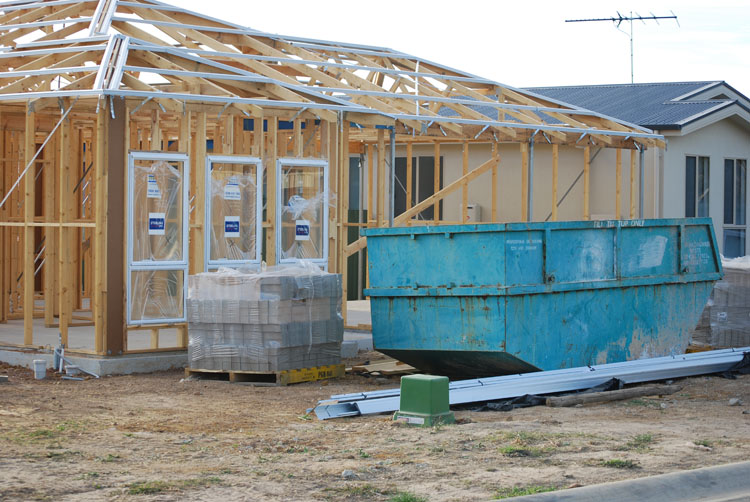Understanding building a home
When building a home, you contract a builder to take your home design and construct it on your site. The builder will subcontract a variety of specialised tradespeople to complete the work.
If you are an ‘owner builder’, you can complete a lot of the work yourself, but will still need licensed tradespeople for some of the work (for example, electrical, plumbing). Unless you are experienced in housing construction, the ‘do it yourself’ option can add risk.
Preconstruction
Before you start construction, you need to carefully choose a builder, and get a quote and contract in place.
Step 1: Choosing a builder
Once you have completed your home design, it is time to choose a builder. Your choice of builder is as critical as your choice of designer.
Your builder will coordinate the building works as project manager. This role includes supervising and coordinating each trade; sourcing, quantifying, and coordinating delivery of materials; and, most importantly, quality-assuring the entire process.
To find a builder, find out who is recommended in your area, or who has built other homes that you like. Your designer can help you with recommendations, based on their own experience or industry knowledge.
Before signing a contract, make sure you are comfortable that you can work with the builder and that they have sufficient finances to carry out the project. Also, ensure they have sufficient skill and experience to build it, and are committed to sustainable outcomes.
Sustainability credentials
Make sure you choose a builder who understands and has worked with sustainable design features.
Choose a builder who will:
- carefully implement sustainability principles as specified in the design
- source and use recycled or reused materials
- access environmentally certified materials and ensure they are ordered with adequate lead times
- separate waste streams on site
- instruct and even backcharge subcontractors who fail to use environmentally preferred practices
- use glues, resins, paints and finishes that do not compromise indoor air quality
- conserve on-site biodiversity
- install and maintain sediment control barriers (see Sediment control in the Materials section).
Master Builders Australia (MBA) and the Housing Industry Association (HIA) train builders in sustainable practices. Choosing a builder with this training from their website listings is a good first step, but does not guarantee delivery of best-practice outcomes. References from satisfied clients are an effective quality assurance method. Both MBA and HIA run sustainability awards programs and the lists of past winners on their websites also provide a good indication of ability.

Photo: Getty Images
Questions to ask
Check the builder’s history. Ask the builder these questions:
- How long have you been in business?
- What experience do you have in this type of project?
- Which insurances do you carry and what warranty do you provide?
- Are you experienced with, and committed to, sustainable practices?
- How do you approach reuse, recycling and waste minimisation?
- How do you ensure that materials come from sustainable sources?
- Are you familiar with sustainability certifications like Global GreenTag, Good Environmental Choice Australia (GECA) or Forest Stewardship Council (FSC)?
- Are you willing to order materials from nominated, preferred suppliers?
- Are your subcontractors aware of sustainable practices?
- Can you show examples of high-quality workmanship, particularly paying close attention to wrapping and sealing the building?
- What facilities will you require on the project (for example, toilet and kitchen access, materials storage in garage or garden area)?
- How might you separate the site (and dust, noise, vibration) from the living areas?
Ask to visit a current project. Speak to previous clients and inspect their homes where possible. Ask the clients about, and check for, evidence of a well-organised, clean, tidy and safe site; polite and considerate employees and contractors; and sustainable practices including the use of durable eco-certified materials, sediment fences and waste separation.

Photo: Lighthouse Architecture and Science
Step 2: Quotes
Once you have one or several builders in mind, ask them to quote for the work. Give them copies of the design documents and specifications drawn up during the design process and ask for a comprehensive quote. Discuss anything that is not clear. If you are comparing several quotes, make your choice based on their experience and commitment, as well as the price.
In preparing a quote, the builder will estimate costs. However, these may change because of unforeseen circumstances (for example, unforeseen ground works, changes in materials or freight costs, time delays, or design changes). The builder will try to manage the risk of cost changes in several ways. Pay careful attention to how the builder has managed risks in the quote, and make sure you are comfortable with the approach.
Contingency sums
Areas of unknown risk can be accommodated through contingency sums or allowances that can be called on to cover unexpected costs. They are often used to cover unexpected subsoil and foundation related costs; increasingly they are being used to provide flexibility in choosing innovative sustainable technologies and practices.
Prime cost schedules
Another way to overcome risk is for the builder to nominate subcontractors to supply and install innovative technologies and provide the builder with a schedule of allowances (or ‘prime cost schedule’) to include in the quote.
Many designers choose and specify the exact make and model of important or high-cost items such as windows and doors, solar hot water systems, smart metering and energy control systems, and on-site renewable energy generation. You, or your designer, can have these items quoted by preferred suppliers and nominated in the contract as prime-cost schedule items to avoid substitution of inappropriate or substandard products by competitive builders.
Lump sum versus cost plus
Choose between ‘fixed price’ (also known as ‘lump sum’) or ‘cost plus’.
With a fixed price, the builder simply quotes a total price for the work that will not change. Fixed price quotes and contracts are generally effective at capping the budget. However, if the builder feels they are going over budget, a fixed price can encourage cost cutting that may compromise sustainable outcomes.
With a cost plus approach, the builder nominates a percentage addition to materials costs for ordering and scheduling, and hourly rates for the builder and trades. These contracts require high levels of trust between owner and builder. While allowing the owner more control over expenditure decisions, they reduce builder responsibility for cost overruns. This can force cost cutting and loss of important sustainable features (for example, photovoltaic arrays) as the budget is exhausted.
For tight budgets, fixed price contracts are generally preferable. If cost plus is used, quarantine some of your budget for sustainable features.
Step 3: Contract
Standard home building contracts are available from many sources, including lending authorities and industry peak bodies. They form the basis of your legally binding agreement with your builder, and of any dispute resolution.
Choose a contract that strikes a reasonable balance between your needs and those of your builder. Clear dispute resolution provisions and nominated independent arbitrators are essential. Attach the builder’s quote, council-approved plans and specifications, certified engineering details and any schedules (prime cost, contingency sums or nominated suppliers/contractors) to the contract.
Have your solicitor and designer review your contract before signing.
Tips for sustainability outcomes
- Ensure that drawings and specifications clearly indicate sustainable design requirements and include penalties for substitution of inferior materials and products.
- Ensure the documentation clearly describes any sustainable design methods or materials that are not yet standard building practice and includes advice on how to implement or source them.
- Consider nominating important, high-cost items such as windows in a prime cost schedule to avoid substitution.
- Include unambiguous instructions that prevent changes or substitution without approval by you or your designer.
- Ask builders to check quotation documents for sustainability compliance risks and note or allow for any contingencies in their quote.
- Ask builders to recommend alternative solutions that suit their trade and supply chains, while delivering equal or improved environmental outcomes.
- Consider the use of contracts that link payments to the achievement of specified environmental outcomes (for example, details of environmentally certified materials, window and glazing specifications, and reuse or recycling details).
- Develop a schedule of reusable materials and negotiate their reuse with your builder.
Construction
Once the contract is in place, construction can begin, provided all approvals and permits are in place (refer to Designing a home for more information).
Step 4: The construction process
The total time for the construction stage for a brick single-storey home can be between 5 and 6 months and much shorter for a timber frame home. However, this greatly depends on your site and builder. Delays can be caused by weather, or shortages of materials or tradespeople.
Parts of the process
- Site and foundation – depending on your site, site works may involve demolishing an existing home or building retaining walls and flattening the ground to prepare it for construction, if required. Once the site is ready, the foundation is laid. The process includes measuring out the design on the site, pouring the footings and installing under-slab drainage, moisture barriers and termite protection.
- Frame or building shell – building frames and external masonry walls are constructed. Roof sheeting, gutters, cladding and insulation are added. Electricians and plumbers install essential wiring and pipes for power, water, and gas.
- Lockup – this is the stage when all your doors and windows can be locked. As your home is now secure and weatherproof, plumbers, electricians, tilers, and carpenters can complete their work.
- Fit-out – electrical (including lights and powerpoints) and other fixtures and fittings including kitchen, laundry and bathroom cabinets and benchtops, tiling, tapware, mirrors, basins, baths and shower screens will be installed.
- Practical completion – all painting, installations and detailing are completed and the home is ready to be viewed by you. You should check to ensure everything is finished to your expectations, and that all included appliances and systems work. Note anything that still needs attention before you make the final payment. Reputable builders will address any feedback before they hand over the keys.
Construction supervision
Supervision can be a good idea to ensure sustainable design practices and materials are being used. Your builder is frequently called on to make decisions about materials and procedures that might vary from those nominated in the plans and specifications due to trade preferences or unavailability of preferred materials. Builders refer these (often urgent) decisions to a supervisor for verification if one is nominated. If not, they may make expeditious but less sustainable choices.
Note
Professional advice or project management by an informed individual or company can ensure that environmentally preferred alternatives are used.
Many designers offer a supervision service as part of their fee structure. However, project management or supervision adds substantial professional indemnity risk to a designer’s insurance profile, so many designers prefer a less formal advisory role. Architects in some states are prevented from offering project management services. If you adopt this role as owner, consult professional advisers or consultants to verify your decisions.

Photo: Kathie Stove
Construction certification
Inspection and certification of your project at critical stages is required by law to confirm that it is built in accordance with the approved plans, specifications, relevant Australian Standards, National Construction Code, and local government regulations, to ensure structural integrity, health, safety, and amenity.
These inspections can identify and rectify problems or omissions before they are built in. Reported instances of inadequate certification of compliance in several jurisdictions indicate that this important aspect is sometimes overlooked. If you are concerned, seek immediate advice from your designer or accredited energy assessor. Many private certifiers offer specialised environmental certification. Contact the Australian Institute of Building Surveyors for more advice.
Post construction
Step 5: Handover
Sometimes design and construction innovation can be wasted because the concepts are not communicated to the owner at handover. Ask your designer and builder for an owner’s manual. If you are a practitioner, give your client detailed instructions on how to operate and maintain the home at handover. If you sell your home, make sure the new owners have a copy.
An owner’s manual or operation guide covers:
- summer and winter operation settings and tips on day–night routines for
– operating and maintaining heating and cooling appliances
– opening and closing curtains and windows
– operating ventilation systems - cleaning of solar appliances
- termite barriers and inspection schedule
- operating guides for water collection and treatment systems
- isolation valves for services (gas, electricity, and water)
- hot water system sacrificial anode replacement date
- hot water system pressure relief valve checks
- painting schedule
- appropriate cleaning products for all surfaces and finishes
- landscape maintenance requirements.
